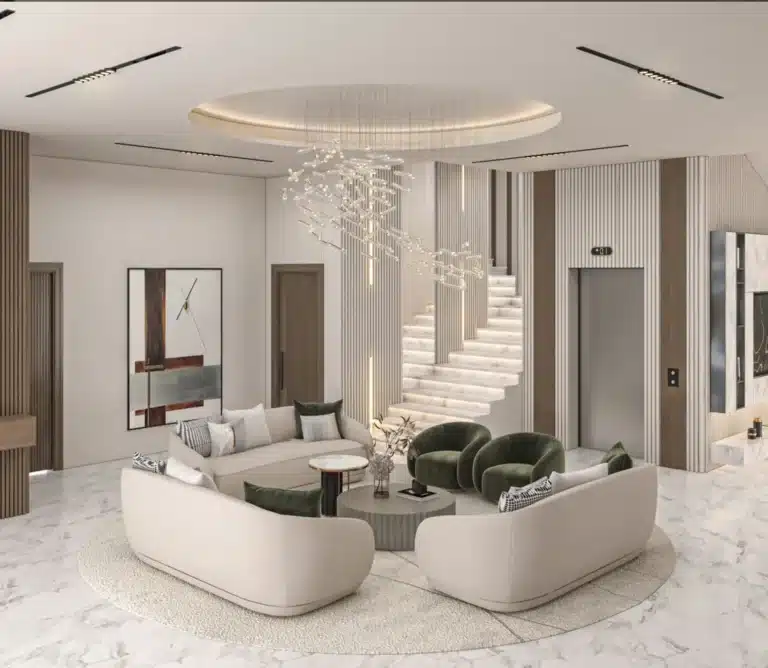Indonesian Architecture: A Comprehensive Guide to Architectural Elements, Materials, and Design Styles
Introduction: The Rich Diversity of Indonesian Architecture
Indonesia, an archipelago comprising over 17,000 islands, boasts one of the richest architectural traditions in the world. Its architecture is shaped by diverse natural, cultural, and social factors, creating a unique blend of vernacular, Hindu, Islamic, colonial, and contemporary styles. Over the centuries, Indonesian architecture has evolved to include royal palaces, traditional homes, historic mosques, and modern structures.

1. Common Formal Elements in Indonesian Architecture
Despite the vast diversity of styles, several unifying elements characterize Indonesian architecture:
✅ High-Pitched Roofs: The most distinctive feature of traditional homes, designed to protect against heavy rains and enhance ventilation.
✅ Stilt Houses (Rumah Panggung): Common in rural and mountainous regions to safeguard against floods and wildlife.
✅ Intricate Wooden Carvings: Adorn doors, windows, and beams, prominently featured in palaces and mosques.
✅ Grand Entrances and Walkways: Reflect Hindu and Islamic influences while promoting natural airflow.
✅ Open Spaces: Homes and buildings often incorporate open layouts to adapt to the hot, humid climate.
2. Materials Used in Indonesian Architecture
Traditional Indonesian architecture relies heavily on natural materials, ensuring sustainability and harmony with the tropical climate:

✅ Wood: Widely used in traditional homes, particularly teak and mahogany.
✅ Bamboo: Utilized for roofs and walls due to its lightweight and earthquake-resistant properties.
✅ Clay and Bricks: Found in palaces and religious structures, such as ancient Javanese temples.
✅ Volcanic Stone: Used in temples and palaces, exemplified by the iconic Borobudur Temple.
✅ Thatch and Palm Leaves: Cover roofs in rural traditional homes.
3. Key Architectural Styles in Indonesia
Indonesia’s architectural styles mirror its cultural and religious diversity:
A. Vernacular Architecture
- Rumah Gadang: Traditional homes of the Minangkabau people in Sumatra, known for their distinctive buffalo horn-shaped roofs.
- Joglo House: Common in Java, featuring pyramid-shaped roofs and ornate wooden pillars.
- Tongkonan: Houses of the Toraja people in Sulawesi, characterized by upward-curving roofs.
B. Religious Architecture
- Historic Mosques: E.g., the Great Mosque of Demak, blending Islamic design with Indonesian elements like wooden pillars and tiered roofs.
- Hindu and Buddhist Temples: Such as Borobudur (the world’s largest Buddhist temple) and Prambanan (a Hindu temple complex).
C. Colonial Architecture
Dutch colonial influence is evident in government palaces in Jakarta, merging European styles with local motifs.
D. Contemporary Architecture
- Modern skyscrapers in Jakarta, like the eco-friendly Menara Astra.
- Sustainable designs incorporating solar energy and natural ventilation.
4. Climate and Environment’s Impact on Indonesian Architecture
Adaptations to the tropical climate include:
✅ Sloped Roofs: Efficient rainwater drainage.
✅ Stilted Structures: Protect against floods and humidity.
✅ Natural Materials: Enhance airflow and thermal comfort.
✅ Large Windows and Open Layouts: Facilitate cross-ventilation and reduce heat.
5. Iconic Examples of Indonesian Architecture
📌 Borobudur Temple: A 9th-century Buddhist masterpiece built from volcanic stone.
📌 Kraton Ngayogyakarta Hadiningrat: A Javanese royal palace reflecting traditional elegance.
📌 Istiqlal Mosque, Jakarta: Southeast Asia’s largest mosque, blending modern and Islamic design.
📌 Baduy Village: A model of sustainable architecture using natural materials.
Conclusion: Does Indonesian Architecture Preserve Its Traditional Character?
Indonesian architecture continues to evolve, marrying rich heritage with modern innovation. While contemporary buildings dominate urban landscapes, traditional-inspired designs remain prevalent in residences and luxury resorts, preserving the nation’s unique cultural identity.
📌 For architects and researchers, Indonesian architecture offers a wealth of inspiration for sustainable design and unique engineering solutions.







